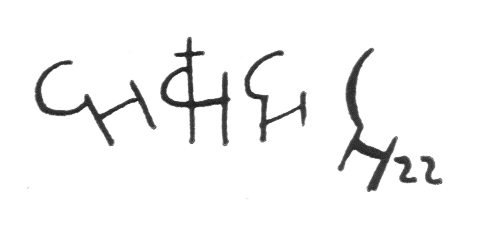|
Hagenbund
The Hagenbund or Künstlerbund Hagen was a group of Austrian artists that formed in 1899. The group's name derived from the name Herr Hagen, the proprietor of an inn in Vienna which they frequented. Early history The group's most prominent members early on were Heinrich Lefler and Joseph Urban, who had originally worked and exhibited within the conservative Vienna Künstlerhaus, but now, like the Vienna Secession, rebelled against the establishment and formed their own organization. The Hagenbund operated for almost a decade in the shadow of the popular and successful Secession, and only in the years that followed the damaging resignation of the Klimt Group from the Secession did its members succeed in developing a more moderate, independent line, in which atmosphere played a major role. After World War I After 1918, the formal language of the Hagenbund came to dominate artistic activity in Vienna, and in the 1920s it provided the most important focus for new artistic currents. ... [...More Info...] [...Related Items...] OR: [Wikipedia] [Google] [Baidu] |
Theodore Fried
Theodore Fried (May 19, 1902 -1980 - known to his friends as Tivadar Fried) was a Hungarian artist, who worked in Vienna, Paris and New York. Early life (Budapest-Vienna) Fried was born in Budapest (or possibly Szeged) in 1902. His father – a watchmaker and jeweller – died when he was nine years old. In 1920 he entered the Budapest Academy of Fine Arts and studied under Gyula Rudnay for four years. His surviving early work includes charcoal drawings of scenes of life which reflect the hardship and poverty of the period after the First World War. To broaden his horizons he moved to Vienna in June 1924 taking with him seven oil paintings and sixty drawings. He was given a one-man exhibition at the Galerie Hugo Heller. This gallery was run by the Heller family. Hugo Heller, who had died the previous year, had been a bookseller and a central figure in Viennese cultural life, who was particularly noted for promoting the writings of Sigmund Freud. It was through the Galerie that he ... [...More Info...] [...Related Items...] OR: [Wikipedia] [Google] [Baidu] |
Georg Mayer-Marton
George Mayer-Marton (3 June 1897 – 8 August 1960) was a Hungarian Jewish artist who was a significant figure in Viennese art between the First and Second World Wars, working in oil, watercolour and graphics. Following his forced emigration to England in 1938, he continued to paint in watercolour and oil. He pioneered the technique of Byzantine mosaic in the UK. Biography Mayer-Marton was born György, or Georg in German, later changed to George on British naturalization, in Győr, Kingdom of Hungary in 1897, and grew up during the final years of Austro-Hungary. He served in the Austro-Hungarian Army during the First World War. From 1919 to 1924 he studied art at the Academy of Fine Arts Vienna and Academy of Fine Arts, Munich, and also visited Ravenna in Italy. He settled in Vienna, and in 1927 became Secretary, later Vice-President, of the leading progressive society of Viennese artists, the Hagenbund. In 1928 he provided illustrations in the Chinese style for ''Der Kreidek ... [...More Info...] [...Related Items...] OR: [Wikipedia] [Google] [Baidu] |
Carry Hauser
Carry Hauser, born Carl Maria Hauser (16 February 1895 – 28 October 1985), was an Austrian painter, stage set designer and poet. Life Carry Hauser was born in Vienna as Carl Maria Hauser into the family of a civil servant. He was educated at the ''Schottengymnasium'' and the ''Höhere Graphische Bundes-Lehr- und Versuchsanstalt'', after which he studied at the Wiener Kunstgewerbeschule under, among others, Adolf Michael Boehm, Anton von Kenner, Alfred Roller and Oskar Strnad. He then began his career as a painter, illustrator, theatrical designer and author, which was interrupted by World War I, for military service in which he volunteered in 1914. His war experiences made him a pacifist. After the war he returned to Vienna, where among others he met Franz Theodor Csokor, for whose play ''Die rote Straße'' ("The Red Street") he designed the set in 1918. In the same year the first comprehensive exhibition of his work was held, in the museum at Troppau, and another was ar ... [...More Info...] [...Related Items...] OR: [Wikipedia] [Google] [Baidu] |
Heinrich Lefler
Heinrich Lefler (7 November 1863, in Vienna – 14 March 1919, in Vienna) was an Austrian painter, graphic artist and stage designer. His father was the painter Franz Lefler. Life and work From 1880 to 1884, he studied at the Academy of Fine Arts Vienna under Christian Griepenkerl and, from 1884, at the Academy of Fine Arts Munich under Nikolaus Gysis and Wilhelm von Diez. In 1891, he became a member of the Society of Austrian Artists and, in 1900, was a founding member of the Hagenbund. From 1900 to 1903, he was an assistant to Anton Brioschi, the head designer at the Vienna State Opera, following which he became a professor at the Academy until 1910. While at the Vienna Opera, he designed a set for the Metropolitan Opera and shipped the pieces to New York. Besides the time spent in his formal occupations, he spent a great deal of time in Weißenbach an der Triesting with his father and his brother-in-law, Joseph Urban, a fellow scenic designer, where they painted murals on ... [...More Info...] [...Related Items...] OR: [Wikipedia] [Google] [Baidu] |


